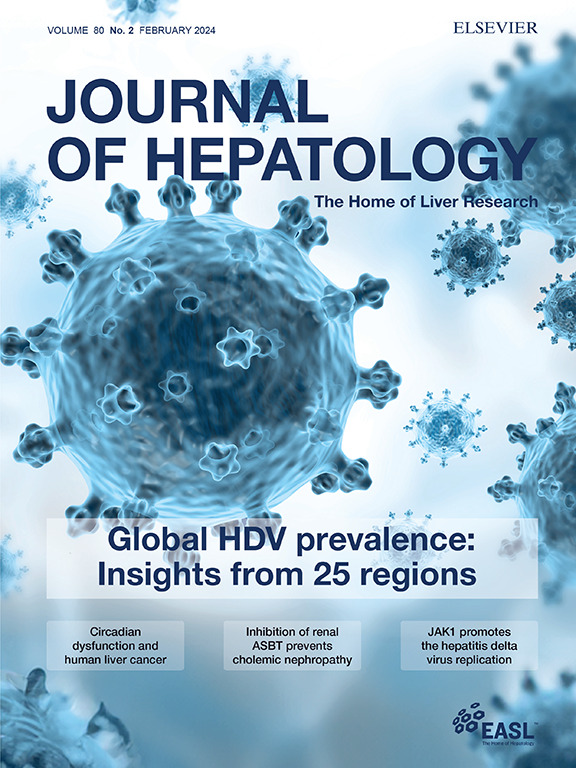Enteronephrohepatic Circulation of Bile Acids and Therapeutic Potential of Systemic Bile Acid Transporter Inhibitors
IF 33
1区 医学
Q1 GASTROENTEROLOGY & HEPATOLOGY
引用次数: 0
Abstract
Together with carriers in liver and small intestine, kidney transporters function to conserve and compartmentalize bile acids in the enteronephrohepatic circulation. In patients with liver disease, systemic bile acid levels are elevated, undergo increased renal glomerular filtration, and contribute to the pathogenesis of cholemic nephropathy and acute kidney injury. In this review, we describe mechanisms for renal bile acid transport and highlight very recent discoveries that challenge current paradigms for the pathogenesis of cholemic nephropathy and renal tubule cast formation. We also discuss the therapeutic potential of inhibiting the kidney apical sodium-dependent bile acid transporter (ASBT) to redirect bile acids into urine for elimination, reduce hepatobiliary accumulation and systemic levels of bile acids, and treat cholemic nephropathy. In conclusion, a deeper understanding of the enteronephrohepatic bile acid axis is providing insights into novel strategies to protect both liver and kidney in patients with liver disease.胆汁酸的肠肾肝循环和胆汁酸转运体抑制剂的治疗潜力
与肝脏和小肠中的载体一起,肾转运蛋白在肠肾肝循环中起保存和区隔胆汁酸的作用。在肝病患者中,全身性胆汁酸水平升高,肾小球滤过增加,并有助于胆碱性肾病和急性肾损伤的发病机制。在这篇综述中,我们描述了肾胆汁酸转运的机制,并强调了最近的发现,这些发现挑战了目前关于胆碱性肾病和肾小管铸型形成的发病机制。我们还讨论了抑制肾尖钠依赖性胆汁酸转运蛋白(ASBT)的治疗潜力,以将胆汁酸转移到尿液中消除,减少肝胆积聚和胆汁酸的全身水平,并治疗胆碱性肾病。总之,对肠肾肝胆汁酸轴的更深入了解为肝病患者保护肝脏和肾脏的新策略提供了见解。
本文章由计算机程序翻译,如有差异,请以英文原文为准。
求助全文
约1分钟内获得全文
求助全文
来源期刊

Journal of Hepatology
医学-胃肠肝病学
CiteScore
46.10
自引率
4.30%
发文量
2325
审稿时长
30 days
期刊介绍:
The Journal of Hepatology is the official publication of the European Association for the Study of the Liver (EASL). It is dedicated to presenting clinical and basic research in the field of hepatology through original papers, reviews, case reports, and letters to the Editor. The Journal is published in English and may consider supplements that pass an editorial review.
 求助内容:
求助内容: 应助结果提醒方式:
应助结果提醒方式:


